The UVEX by Shelyak : first light
By Olivier Garde
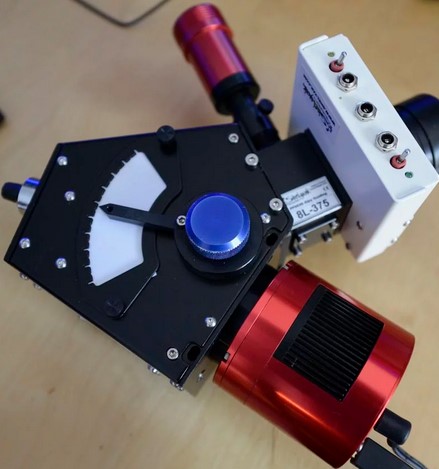 I had the opportunity to test one of the two prototypes of the UVEX version made by Shelyak Instruments. This version of UVEX differs from the “3D printing” versions already produced by several teams with some very visible elements:
I had the opportunity to test one of the two prototypes of the UVEX version made by Shelyak Instruments. This version of UVEX differs from the “3D printing” versions already produced by several teams with some very visible elements:
- This is a metal box.
- There is an adjustment button on the box which allows the adjustment of the 2 internal mirrors.
- An access to the grating from the side of the instrument to easily change it.
Cameras and modules installation
I have install on the UVEX, an ASI 183 MM pro camera (CMOS), an Alpy autoguiding module with an ASI 174 mini camera and an Alpy calibration module. Everything is mounted on a 12 inch Ritchey-Chrétien telescope (305mm diameter at f / 8). Fixing of the various elements does not pose any particular problem.
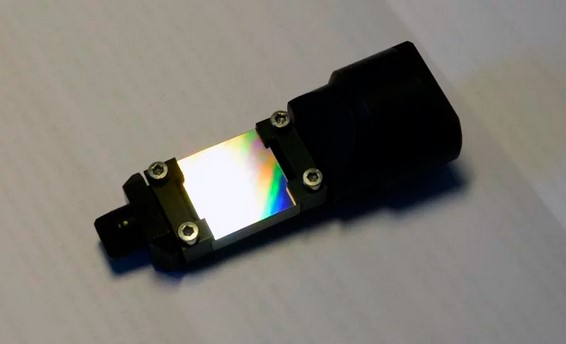
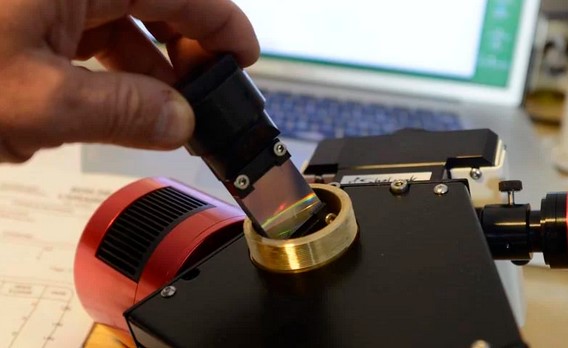
First light
The first spectrum was made on Vega with very short exposures of 0.5s to not saturate the spectrum.

Above, a raw spectrum of Vega and for the final treatment, I made 21 exposures. I did not perform specific processing forCMOS sensors, but classic CCD processing based on bias, dark and flat. CMOS processing could have allowed a better signal to noise ratio in the extreme blue part of the spectrum. The calibration was made with the Balmer lines of the spectrum (to determine the calibration polynomial) and with the Ar / Ne lamp of the Alpy calibration module (to “fix” the spectrum to a given wavelength). The resolution obtained with this grating and the ASI 183 MM is about R=750.

Tests with a 1200 gr/mm grating
I tried a 1200 gr/mm grating blazed at 400nm, optimized for the blue part of the spectrum. I adjusted the grating orirenation thanks to the adjustment needle of the UVEX box by pointing the telescope on the sky (not directly on the sun of course !!!).

It’s easy to identify the H and K lines of Calcium II. This adjustment makes it possible to have a wavelength range of 3650 Å to 4780 Å on this spectrum with a resolution of R = 2853 (but by adjusting the focus a little better, we can reach 3000).
Then test on Vega with this grating.

Here’s what a raw spectrum looks like with this grating as it appears at the time of acquisitions.
I did 21 exposures of 4s on Vega during a night which was not very transparent with some cloudy passages.
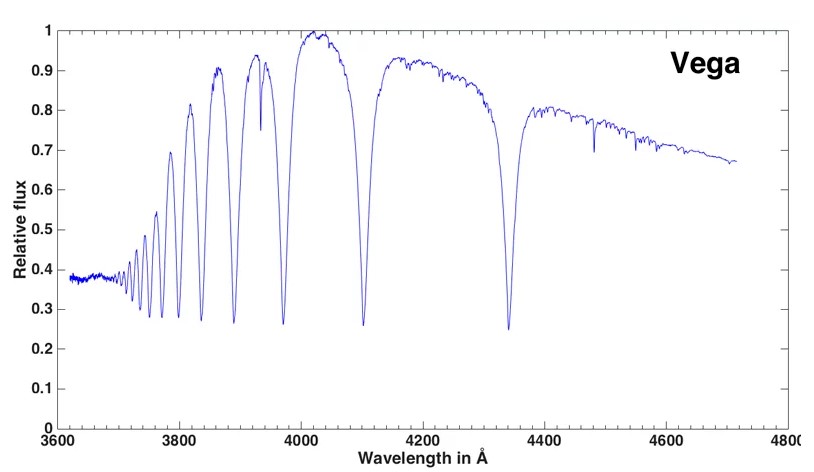
And still a classic CCD process on this spectrum. The resolution is around R=3000.
Further trials with various gratings
It is very easy to change gratings with this UVEX. It is thus possible to use grating of 300, 600, 1200 and 1800 gr / mm blazed at various wavelengths according to the spectral range to be studied.
300 gr/mm grating blazed at 500nm

1200 gr/mm grating blazed at 400nm
With this grating, a resolution R = 3000 is obtained with a “classic CCD” processing, a CMOS processing would have made it possible to have a better SNR in the blue.
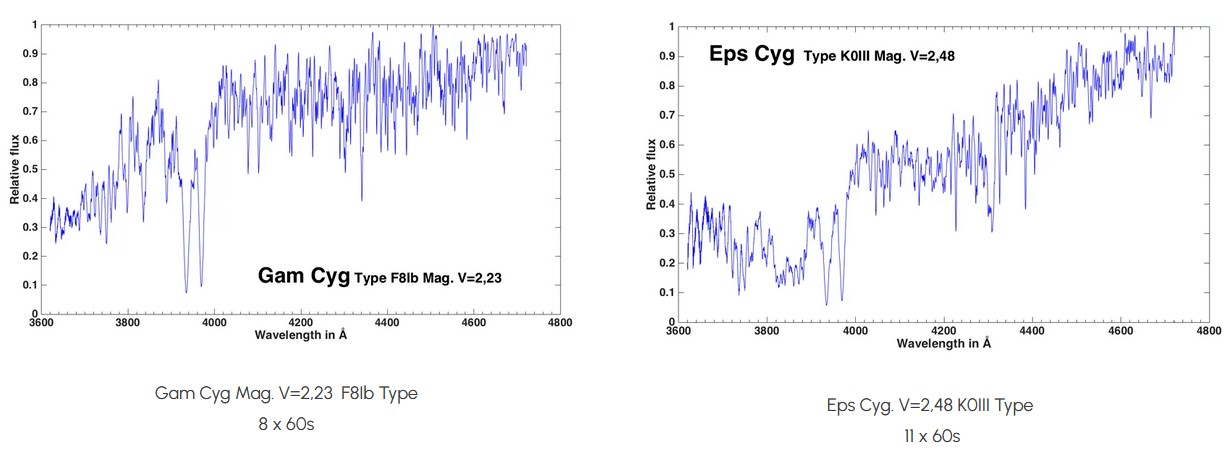
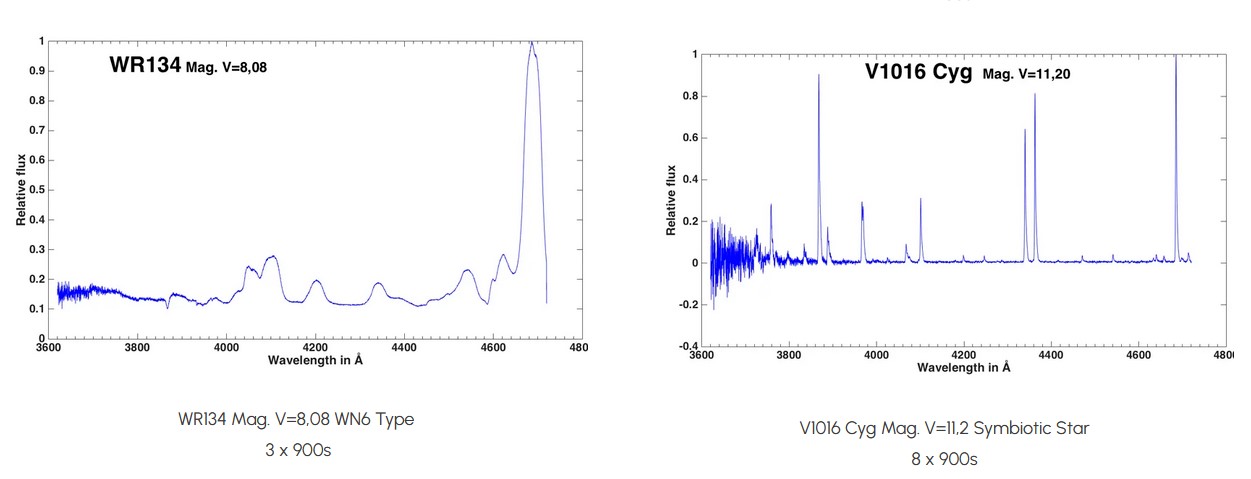
 600 gr/mm grating blazed at 750nm
600 gr/mm grating blazed at 750nm
During a measurement campaign at the OHP (Observatoire de Haute Provence in south of France), we were able to make, with Christian Buil and Stéphane Charbonnel, some spectra with the UVEX prototype # 2 using this 600 gr/mm grating in the near IR.
We could have gone further in wavelength but to get our landmarks in the near IR, we preferred to have the H Alpha line present on the spectrum.
Here the resolution is about R = 1800 and the spectra processing was made by Christian with the very last version of ISIS V6.0.0 which allows the CMOS process to be carried out.
RC 12′ and UVEX #2 on the OHP site
(Photo : Christian BUIL)
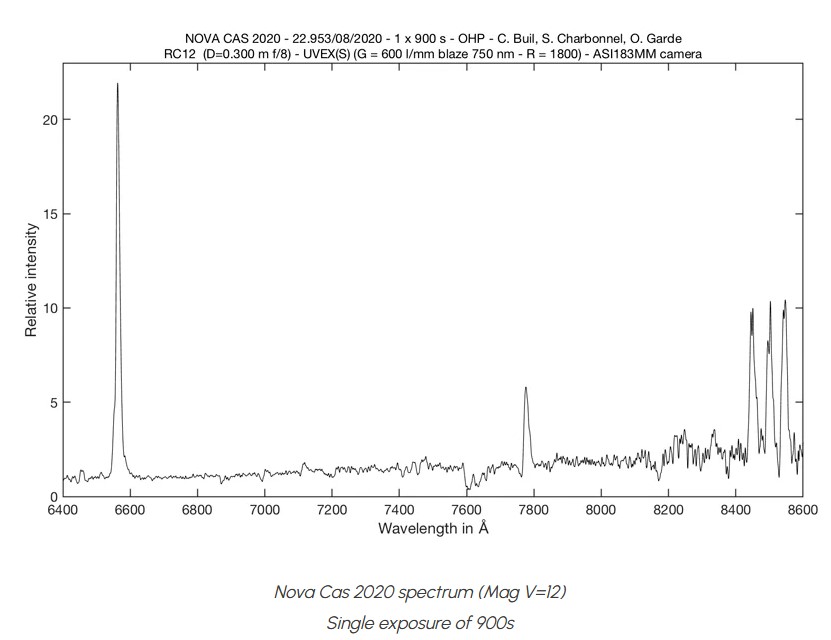
On this Nova spectrum, we can see in the near IR, the first 3 lines of the Hydrogen Paschen series in emission.

This spectrum was produced in difficult conditions: gusts of wind, passing clouds and problems with the mount …
Conclusion
These first tests on this Shelyak version of UVEX were particularly conclusive. I appreciated the ease of changing grating or of being able to access from the outside to the adjustment of the internal focusing of the spectrograph. The fixing of the camera on the spectrograph is very rigid and simple to implement. You can also fix the Alpy 600 modules using an adapter flange. The spectrograph is now back at Shelyak to validate some mechanical elements that can be optimized.
Some useful links
- The website dedicated to the UVEX project : http://spectro-uvex.tech
- Spectra processing with a CMOS camera : http://www.astrosurf.com/buil/UVEX_soft/
- The spectro ARAS forum and the UVEX section : http://www.spectro-aras.com/forum/viewforum.php?f=45
- A webinar on the various achievements of UVEX : https://www.youtube.com/watch?v=QHcY9vhOHTM
⇒Back to UVEX Spectroscope









